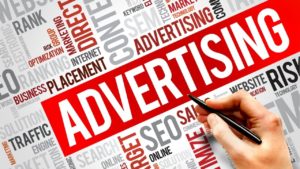Your Ad Campaigns Do Not Have to be Dull
4 min read
Here’s an ad design challenge that will force you to create creative ads rather than dull ones. It’s what I call the “Photo ID Design Model,” and it’s a great tool to have if you’re creating advertising for your business or organization. It’s one of the most simple and efficient ways to make a memorable ad, banner, or billboard. It will almost always provide a noticeable result.
Understand the photo id
Consider a “picture id” for a moment. The image is the most prominent feature. The card’s other features, such as the person’s name, address, or ID number, “support” the photo.
These items aren’t always less significant than the photograph. However, the photo is unquestionably the most important component. It’s what the photo id is all about, and the graphic style of the card reflects that.
If you’re not used to thinking of graphic design in terms of purpose, “Hey, it’s just a card with a picture on it” may seem exaggerated. But consider this for a moment. A photo’s sole d’s purpose is to identify a person. As a result, the photo is the most significant part of the card. As a result, it’s only natural that the shot gets the greatest attention.
Make the photo the focal point of the design.
When you use the photo id model on a print ad, a poster, a billboard, a banner design, or even a TV ad, the results are usually very simple. You presume the image — the photograph — will be the focal point of the piece. You also anticipate that the photograph will serve as the piece’s primary “identifier” — the element that identifies the piece’s aesthetic, as well as its substance or theme. For example, suppose you come across a snapshot of a cool-looking person wearing sunglasses. And that image is appropriate for the message you’re attempting to portray in your advertisement.
Serious advertising designers would argue that this flips the communication process on its head. “You should always start with your selling message and discover items that emphasize that message,” they could advise. If you want to promote “pet care” products, for example, you should start with the message you want to convey and then look for pieces that represent that message. “Our pet care products make happy pets,” for example, maybe your topic. This theme would then generate a variety of photo and headline suggestions.
Of course, this is excellent in theory, but advertising is rarely that simple in practice. In truth, you almost always begin with a really clear notion (“Our pet care products make happy pets.”) As you try to develop it, you discover that it doesn’t exactly function or that the shot you were looking for isn’t available. Then, when you’re looking through the collection of “pet care” photographs, you come across one that piques your attention. As a result, you adjust your original notion to fit the available photo.
In other words, the photograph has served as the ad’s “organizing motif.” Consider all the cleavage photographs on the front pages of women’s magazines if you still believe this distorts or perverts the communication process. Cleavage sells publications, as the cover designer knows. As a result, the snapshot serves as a beginning point. The rest is up to you.
The Photo ID Model’s Elements
Of course, there are no hard and fast rules about which elements should be included in your banner or poster, but they should normally include the following:
- Photograph of a product or a photo collage
- The Primary Headline
- A description of the product or a sales pitch
- Business Identifier (Logo, address, etc.)
Anything more than this will make it too crowded. This is especially true of posters, billboards, and banners, which are typically intended to be seen from afar. It’s not a good idea to try to deliver a lot of information. Only include your main selling pitch and possibly an overall image.
It’s crucial to be creative at all times.
A key distinction between a “photo id” and an advertisement is that it lacks the creative aim that we generally associate with advertisements. We don’t expect advertisements to consist solely of images of the product, the storefront, or the business president. We expect them to be persuasive — to “sell” the goods or idea — and we presume that requires some ingenuity.
In fact, one of the issues with the photo id model is that it may become an uninteresting formula for producing commercials. We may get into the habit of relying on the framework — dominating photo, significant headline, sales pitch, company identity — and assuming that using our imagination isn’t necessary. We may believe that it is not required to write a catchy headline or find a striking and unforgettable photo.
To put it another way, we frequently settle for the mundane rather than coming up with anything innovative. Instead of an innovative statement of what it can do for me, what problem it can solve, or how much money I will save if I buy it, we settle for a dull description of the goods.
In general, when it comes to advertising, creativity is nearly always preferable than a lack of it. Of course, proving this is tough. Worse, many people claim they lack imagination, which they believe excuses them from trying a bit more to come up with a catchy headline or tagline concept.
Even if you’re “creatively challenged,” you should still give it your all. Because it all boils down to this in advertising: “Do you want your ad, poster, billboard, or banner to be effective or not?”




